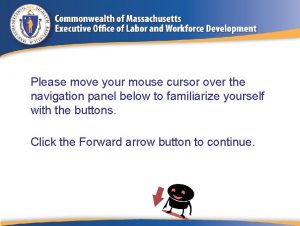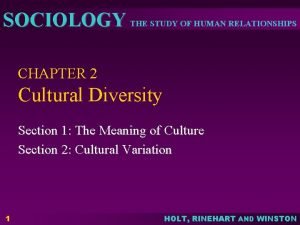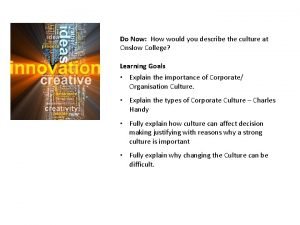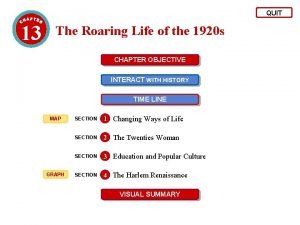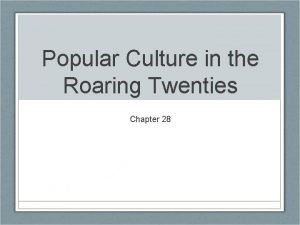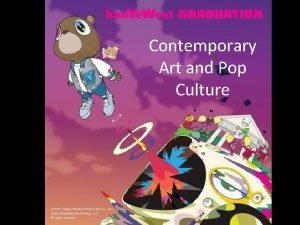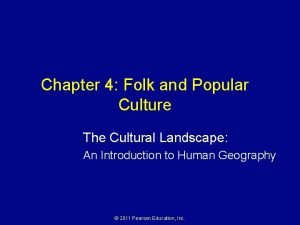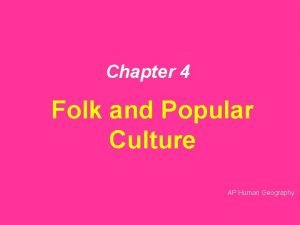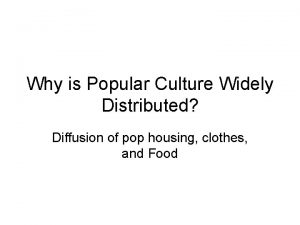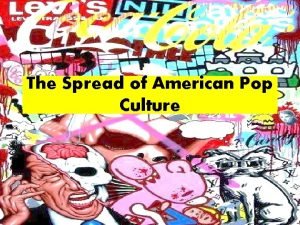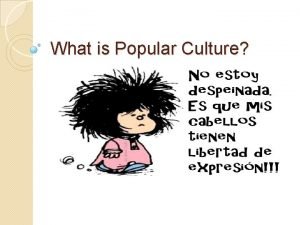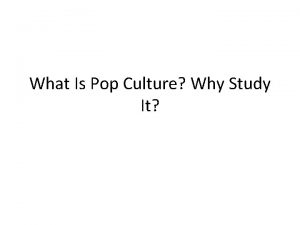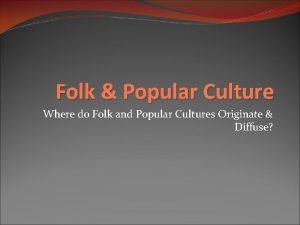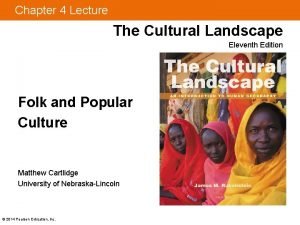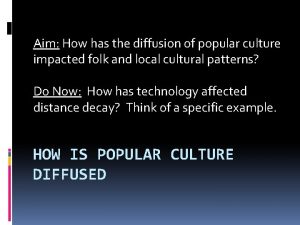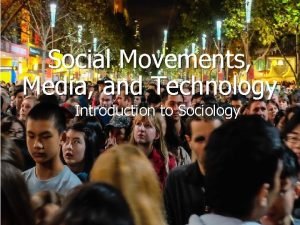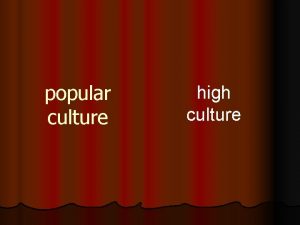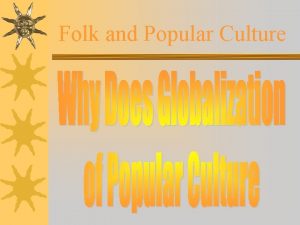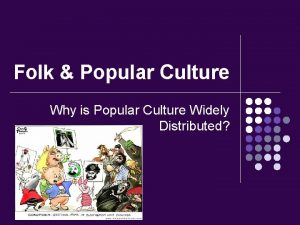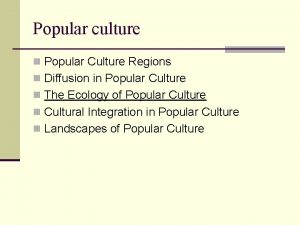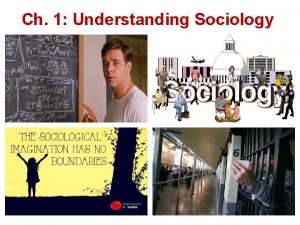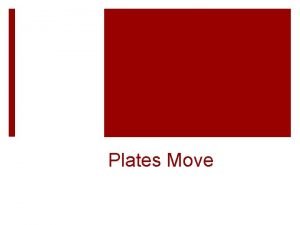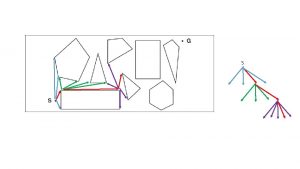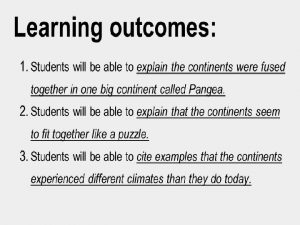Sociology 115 Media Popular Culture PLEASE MOVE TO















































- Slides: 47

Sociology 115: Media & Popular Culture PLEASE MOVE TO THE FRONT! ROW G or closer Matt Kaliner (kaliner@fas. harvard. edu) Lecture #6: Production of Culture / Writing in Sociology September 20, 2016 Announcements: üResponse paper #1 due Friday Sept 23 at 4 pm. ü Upload using the online dropbox. ü Office hours limited this week ü Need to travel to Nebraska today & tomorrow for my grandfather’s funeral. ü Can meet TODAY here in lecture hall until about 2 pm. ü Thursday open hours 1: 30 pm-5 pm in WJH 404. Teaching Fellows have office hours too!

Plan for Today • Wrapping up Production of Culture Perspective • Paper #1 Exercise • Blockbuster strategy (if we have time) • Transition to audience/reception • Departmental Writing Fellow Jonathan Mijs • Writing in sociology classes • How to find help

Production and reception • ‘Production of Culture’ perspective • institutional and market arrangements underlying the actual creation of different cultural forms

Prod. of Culture: 6 keys üTechnology üLaw and regulation 3. Industrial structure 4. Organizational structure 5. Career Structure 6. Consumer markets

Prod. of Culture: 6 keys 1. Technology • New technology introduces ‘exogenous’ impetus for change in art production ü -n. b. ‘exogenous’ means ‘from-outside’ • • E. g. Beethoven’s pianoforte E. g. influence of the microphone on singing styles/singers (belters v. crooners) E. g. turn-tables, MP 3, etc on sampling and DJing Implications for Rock and roll?

Prod. of Culture: 6 keys 1. Technology • New technology introduces ‘exogenous’ impetus for change in art production ü -n. b. ‘exogenous’ means ‘from-outside’ • For Rock and Roll? • • Record format wars • 45 was cheaper, more durable, • great for sending singles to radio stations Transistor radios, car radios

Prod. of Culture: 6 keys 2. Law and Regulation: ‘exogenous’ factor • Copyright, intellectual property law, anti-monopoly statutes, e. g. limit and shape what ‘artists’ produce and what gets to market and how… • • Cabaret Laws, 1926, NYC. Boston Nightlife

Prod. of Culture: 6 keys 2. Law and Regulation: ‘exogenous’ factor • Copyright, intellectual property law, anti-monopoly statutes, e. g. limit and shape what ‘artists’ produce and what gets to market and how… • E. g. , Wendy Griswold (1981) on American Character and the American novel… • • • US copyright law makes doesn’t protect British authors US market thus saturated with British novels Thus, US authors avoid direct competition w/ UK genre fiction

Prod. of Culture: 6 keys 2. Law and Regulation: cont… • HUGE (unpredictable) factor in future of Internet and digital media… • Limits on duplication (despite lack of precedent) • • • Lawrence Lessig, The Future of Ideas Anti-monopoly restrictions on convergent serviceproviders? Censorship? Licensing fees and service charges What of Rock and Roll? (song writing)

Prod. of Culture: 6 keys 3. Industrial Structure (endogenous) • The way art/culture production is physically and economically organized: • E. g. ownership and size of firms; number of firms in competition • Contrast: movie/music industry w/ fine art • Big studio system versus gallery system • 3 ‘ideal-types’: {next slide}

Prod. of Culture: 6 keys 3. Industrial Structure • The way art/culture production is physically/economically organized: • E. g. ownership and size of firms; number of firms in competition 3 ‘ideal-types’: 1) Oligopoly (one or two major firms; no competition) • 2) Small, competitive shop-system (many small players; diffuse competition) • 3) E. g. late 50 s-60 s pop music indust. Competing oligopolies (big firms support small-niche branches to remain competitive) • • E. g. 1940 s pop. music indust. E. g. current film/music industries Rock and Roll?

Prod. of Culture: 6 keys 4. Organizational Structure • How are individual firms/producers within a cultural field organized? • • (closely related to # 3, Industrial Structure) Vertically-organized, top-down firms (e. g. IBM) vs. Horizontallyorganized, decentralized firms (e. g. dot. coms) o What would be the strengths and weaknesses of each? ü Pronounced tendency for entire organizational ‘fields’ to move in tandem (‘institutional isomorphism’) ü Key (economic sociology): firms do not act as ‘rationally’ as economic models would have it.

Prod. of Culture: 6 keys 4. Organizational Structure • • Vertically-organized, top-down firms (e. g. IBM) Horizontally-organized, decentralized firms (e. g. dot. coms) ü What would be some strengths and weaknesses of each? a) b) c) d) e) Productivity vs. innovativeness Risk-aversion vs. risk-taking Discipline vs. flexibility Presentist vs. futurist Client-centered vs. creator-centered?

Prod. of Culture: 6 keys 5. Occupational Careers • What is the average artist’s career trajectory? • • • What is the road to the top? The typical way in? The amplitude and density of career niches?

Prod. of Culture: 6 keys 5. Occupational Careers • What is the average artist’s career trajectory? • • • What is the road to the top? The typical way in? The amplitude and density of career niches? Some considerations: a) Gatekeeping by insiders or outsiders?

Prod. of Culture: 6 keys 5. Occupational Careers • I. e. what is the average artist’s career trajectory? • What is the road to the top? The typical way in? The amplitude and density of career niches? Some considerations: a) Gatekeeping: insiders or outsiders? b) Training: formal or informal? (e. g. theater vs. movie acting)

Prod. of Culture: 6 keys 5. Occupational Careers I. e. what is the average artist’s career trajectory? • • What is the road to the top? The typical way in? The amplitude and density of career niches? Some considerations: a) Gatekeeping: insiders or outsiders? (e. g. academics vs. film industry) • b) Intermediaries? (e. g. talent-agents) Training: formal or informal?

Prod. of Culture: 6 keys 5. Occupational Careers I. e. what is the average artist’s career trajectory? • • What is the road to the top? The typical way in? The amplitude and density of career niches? Some considerations: a) Gatekeeping: insiders or outsiders? (e. g. academics vs. film industry) • b) c) Intermediaries? (e. g. talent-agents) Training: formal or informal? Career ‘space’: ample mid-level positions v. star system

Prod. of Culture: 6 keys 6. Consumer Market ü How are art products presented to consumers? • Key issues: a) Labeling: signals ‘categories’ of product to consumers • E. g. ‘best-selling’ lists construct diff. categories of music/film/lit.

Prod. of Culture: 6 keys 6. Consumer Market • How are art products presented to consumers? • Key issues: a) Labeling: signals ‘categories’ of product to consumers b) Legitimacy-building: signals about ‘quality’ of cultural product c) Discourse-building: critical discourse helps establish/legitimate genres

• Conclusion: A wide variety of factors entirely disconnected from content/style actually help shape content/style of cultural products… • E. g. • • Business structure Occupational structure Legal structure Critical discourse • Does any of this explain cultural stagnation? (to be addressed in section and response paper…)

Response paper #1 For this assignment, please choose a cultural object or phenomenon that interests you – say, skinny jeans or super hero movies or froyo or “literally” - to engage and evaluate both the trends that Anderson identifies in his article, “You Say You Want a Devolution? ” and the explanation for those trends offered by the production of culture perspective in the “Why 1955” reading and lecture. This question has three parts:

1. Familiarize yourself with the object. This is a paper about applying and evaluating ideas, more so than about your research skills, but it will be helpful to spend a little time tracking any important changes or trends, so that you can fully engage with the rest of the assignment. Online sources including Wikipedia are fine, but be sure to properly attribute any sources you use, and use a consistent style (footnotes, in-text citation, etc). You can start the paper by briefly explaining your object and touching on these trends before addressing the reading questions below. 2. Explain Anderson’s argument about cultural stagnation, and speculate as best you can on how your cultural object might fit within his scheme. You need not agree with Anderson nor have an encyclopedic knowledge of your object; the goal here is to demonstrate your creativity and engagement with his argument in a fun but grounded way, by reference to your object/phenomenon. 3. Please address how the production of culture perspective might explain any trends in your object/phenomenon? Choose at least two of the six keys (e. g. , technology, law and regulation, careers, etc) discussed in the reading and lecture, and posit how these factors might help explain the dynamics or stagnation observed.

Technical details… • Please be concise: you must limit your answer to four to five doublespaced pages. • Essays are due Friday September 23 th at 4: 00 pm via the appropriate dropbox on the course website. • Please include a cover page (not included in the 5 pages) with your name and HUID number. On the remaining pages, include a header with your HUID number but not your name. • Essays will be graded on a numerical scale. • Style counts, so please edit your essay carefully.

Reach out for advice! • Consult your Teaching Fellows or Professor Kaliner if you have questions or concerns. • Office hours! • For help with writing, the Sociology Department has a special Departmental Writing Fellow ready to meet with you and review paper drafts.

An example: Food trucks!

Food trucks: Not new.

Really not new: Chuck Wagon

Really not new: Food Peddlers

Food trucks: ~2008


Food Truck Festivals? !


Prod. of Culture: 6 keys 1. Technology • New technology introduces ‘exogenous’ impetus for change in art production What technology impact food trucks? ü Mobile payments, social media, geolocation apps ü Maybe something about the truck itself? ?

Prod. of Culture: 6 keys 2. Law and Regulation: ‘exogenous’ factor Copyright, intellectual property law, anti-monopoly statutes, e. g. limit and shape what ‘artists’ produce and what gets to market and how… Food trucks? • • • Sanitation/health regulations on food production in a moving vehicle, regulatory pressure from restaurants and parking advocates all effect food trucks.

City by city regulations – varies widely!

Prod. of Culture: 6 keys 3. Industrial Structure (endogenous) • The way art/culture production is physically and economically organized: • E. g. ownership and size of firms; number of firms in competition • Contrast: movie/music industry w/ fine art • Big studio system versus gallery system Food trucks: Very unique industrial structure comes with mobility and size of truck and operation

Prod. of Culture: 6 keys 3. Industrial Structure (endogenous) • The way art/culture production is physically/economically organized: • E. g. ownership and size of firms; number of firms in competition 3 ‘ideal-types’: 1) 2) 3) Oligopoly (one or two major firms; no competition) Small, competitive shop-system (many small players; diffuse competition) Competing oligopolies (big firms support small-niche branches to remain competitive)

Prod. of Culture: 6 keys 4. Organizational Structure • How are individual firms/producers within a cultural field organized? • • (closely related to # 3, Industrial Structure) Vertically-organized, top-down firms (e. g. IBM) vs. Horizontally-organized, decentralized firms (e. g. dot. coms)

Prod. of Culture: 6 keys 5. Occupational Careers • I. e. what is an average artist’s career trajectory (in said field)? • • E. g. What is the road to the top? The typical way in? The amplitude and density of career niches? Food trucks: emerge during the recession • • Shifts in career structure for young chefs Training not necessary?

Prod. of Culture: 6 keys 5. Occupational Careers • I. e. what is the average artist’s career trajectory? • What is the road to the top? The typical way in? The amplitude and density of career niches? Some considerations: a) Gatekeeping by insiders or outsiders?

Prod. of Culture: 6 keys 5. Occupational Careers • I. e. what is the average artist’s career trajectory? • What is the road to the top? The typical way in? The amplitude and density of career niches? Some considerations: a) Gatekeeping: insiders or outsiders? b) Training: formal or informal? (e. g. theater vs. movie acting)

Prod. of Culture: 6 keys 5. Occupational Careers • I. e. what is an average artist’s career trajectory (in said field)? • • E. g. What is the road to the top? The typical way in? The amplitude and density of career niches? Food trucks: emerge during the recession • • Shifts in career structure for young chefs Training not necessary?

Prod. of Culture: 6 keys 6. Consumer Market • How are art products presented to consumers? • Key issues: a) Labeling: signals ‘categories’ of product to consumers b) Legitimacy-building: signals about ‘quality’ of cultural products c) Discourse-building: critical discourse helps establish/legitimate genres Food trucks? “Artisan, ” “hip, ” trendy, are all categories generated and diffused in these ways.

Conclusions • Useful framework for understanding food trucks? • Implications for cultural stagnation?

Blockbusters Youngest women to get tenure at Harvard Business School – We will return to this on Thursday!

To All Students Taking Sociology Classes - Need help writing a sociology paper? Please schedule an appointment with our Departmental Writing Fellow, Jonathan Mijs: DWF Office Hours. The DWF assists anyone taking a sociology course--concentrators, freshmen, and students from other concentrations. As part of a sociology course, students will be writing a variety of papers (such as weekly reflections, research proposals, senior theses and many others), that draw on course materials and concepts and follow the conventions of sociological argument and writing, which can be quite different from other writing conventions in other academic disciplines. Make an appointment today! For more information about writing in sociology, including an online video from the 2015 -2016 DWF and slides with helpful advice, please click here: http: //isites. harvard. edu/icb. do? keyword=sociologydwf&pageid=icb. page 381047
 Folk culture and popular culture venn diagram
Folk culture and popular culture venn diagram Folk culture and popular culture venn diagram
Folk culture and popular culture venn diagram Homework due today
Homework due today Popular culture
Popular culture What has roads but no cars rivers but no water
What has roads but no cars rivers but no water Please move your pointer
Please move your pointer Nobody said anything raymond carver
Nobody said anything raymond carver Definition of culture in sociology
Definition of culture in sociology Definition of culture in sociology
Definition of culture in sociology Culture outline
Culture outline Ladette culture sociology definition
Ladette culture sociology definition Nature of culture in sociology
Nature of culture in sociology Types of culture in sociology
Types of culture in sociology 1920 popular culture
1920 popular culture Chapter 28 popular culture in the roaring twenties
Chapter 28 popular culture in the roaring twenties Deconstructing the popular
Deconstructing the popular Folk and popular culture
Folk and popular culture Pop culture themes
Pop culture themes Folk and popular culture
Folk and popular culture Folk vs pop culture
Folk vs pop culture Chapter 13 section 3 education and popular culture
Chapter 13 section 3 education and popular culture American culture collage
American culture collage Learning english through workplace communication writing
Learning english through workplace communication writing Chapter 13 section 3 education and popular culture
Chapter 13 section 3 education and popular culture Postwar america chapter 19 section 1
Postwar america chapter 19 section 1 Rapid diffusion of popular culture
Rapid diffusion of popular culture Universalization of popular culture examples
Universalization of popular culture examples Popular culture images
Popular culture images How do the origins of folk and popular culture differ?
How do the origins of folk and popular culture differ? How do the origins of folk and popular culture differ?
How do the origins of folk and popular culture differ? Popular culture ppt
Popular culture ppt Why does globalization of popular culture cause problems?
Why does globalization of popular culture cause problems? High culture
High culture Features of popular culture
Features of popular culture Raymond williams analysis of culture
Raymond williams analysis of culture What is popular culture
What is popular culture Material and non material culture examples
Material and non material culture examples Pop culture of the 1950s
Pop culture of the 1950s What is pop culture
What is pop culture What is popular culture
What is popular culture What is assimilation
What is assimilation Examples of folk and popular culture
Examples of folk and popular culture Why is access to folk and popular culture unequal
Why is access to folk and popular culture unequal Ap human geography folk and popular culture
Ap human geography folk and popular culture Popular culture diffusion
Popular culture diffusion Media representation sociology
Media representation sociology What is a social movement sociology
What is a social movement sociology Individual culture traits combine to form culture patterns.
Individual culture traits combine to form culture patterns.





